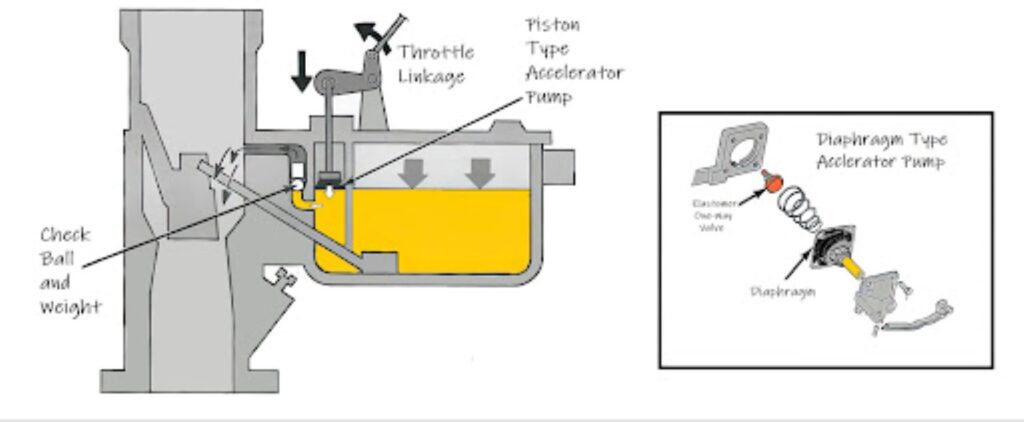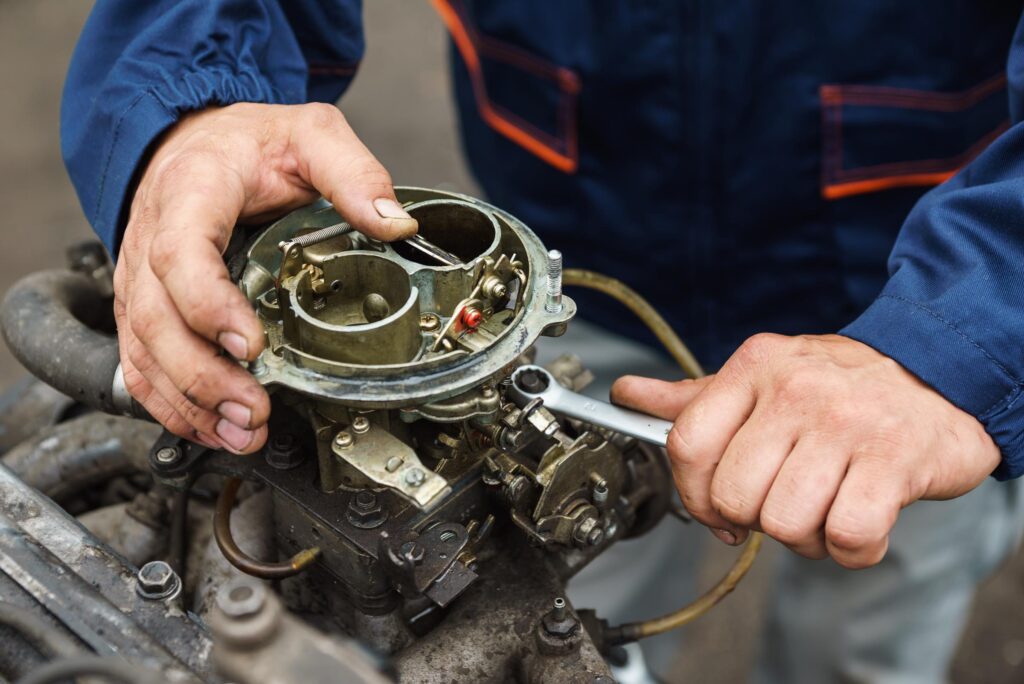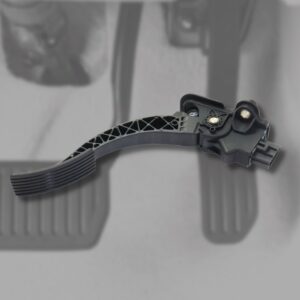Something may be wrong with your carburetor’s accelerator pump if your car displays any of the following symptoms:
- Spins a long time before starting
- Engine stalls and sputters when applying throttle
- Hesitation on acceleration
While the accelerator pump is a carburetor thing, it’s important to note that fuel injection systems do the same job as the carburetor accelerator pump with heavy simultaneous injector pulses when the engine is being started cold. The engine controller (PCM) also adds extra injector pulses when the throttle angle is increased, because regardless of how the engine is receiving its fuel, it needs more fuel when starting cold and extra fuel when increasing throttle angle. This is the physics of gasoline engines.
What Is an Accelerator Pump?
The accelerator pump delivers an extra shot of fuel into the engine whenever the accelerator is applied. That’s why it’s called the “accelerator pump.”
This process wets the manifold during first start and also provides an instantaneous mechanical shot of fuel necessary to bridge the time gap between the increased airflow through the venturi and the slightly delayed delivery of fuel from the reservoir when airflow increases. It’s also necessary because the extra power is needed to change the speed of the rotating mass of the engine.

What Does a Carburetor Do?
The carburetor mixes air and fuel, atomizing the fuel for proper combustion. Though the carburetor has been rendered obsolete by fuel injection for cars and trucks alike, many generator and motorcycle engines still have it.
What Causes Accelerator Pump Failure?
The accelerator pump works whenever you drive, using your vehicle regularly will cause the pump, as well as the carburetor, to wear down.
Carburetors wear out and will usually need work a time or two during the life of the vehicle. The accelerator pump is a rubber part, and rubber parts fail over time with use. But there are other parts of a carburetor that can wear out as well.
Symptoms of a Bad Accelerator Pump to Watch Out for
Because the accelerator pump is such an integral part of carburetors, it is usually replaced along with the rest of a faulty carburetor, or if the carburetor is rebuilt, it will be replaced during that task.
Some diaphragm-type accelerator pumps can easily be replaced without removing the carburetor, but replacing a piston-type accelerator pump requires particle disassembly of the carburetor.
Here are some telltale signs of accelerator pump failure:
Torn Fuel Filters
The fuel filter keeps contaminants from reaching the carburetor. Debris can cause other carburetor issues but they can physically damage the accelerator pump, particularly if it’s a piston-type pump.
Stalling or Hesitation on Acceleration
Hesitation on acceleration can happen if ithe accelerator pump is unable to deliver fuel to the engine when you press the throttle, as discussed previously.

Vehicle Is Slow to Accelerate
It’s the job of the accelerator pump to bring extra fuel to the engine when you press the throttle. If your car is slow to accelerate, there might be something wrong with the accelerator pump. However, remember that there could be other reasons for slow acceleration.
Getting the Most Out of Your Carburetor and Accelerator Pump
Technically, there is no “maintaining” the accelerator pump because it either works or it doesn’t. However, you can do a few things to get the most out of your carburetor and accelerator pump.
Tune the Carburetor Often

A mistuned carburetor can cause problems like hard starts, rough idling, poor fuel economy, and hesitation when accelerating. So you must adjust it often. If you don’t know how to properly adjust the carburetor, you’ll make more problems for yourself, so be careful here. Carburetor work requires an advanced level of technical understanding that most casual car owners don’t have.
If you don’t know how to properly adjust the carburetor, you’ll make more problems for yourself, so be careful here.
–Richard McCuistian, ASE Certified Master Automobile Technician
Get Your Vehicle Serviced at a Dealership
Even if there’s nothing overtly wrong with your vehicle, it pays to get your car serviced at least once a year to max out its longevity. That being said, there are very few dealership technicians in this day and age that have any understanding of carburetors.
Here are the advantages of getting your car serviced:
- Professionals can assess if your car needs any repairs or tune-ups.
- Serviced cars last longer and perform better than ones that are poorly maintained.
- Serviced cars have a much higher resale value.
- Having a fully functional car means you are safer on the road.
Bringing your car in for servicing also means you can get an expert’s opinion on the state of your accelerator pump and carburetor (if there are any technicians working there that understand carburetors). If you’re unsure about your vehicle’s conditions, you can count on the advice of licensed technicians.
How to Get a Quality Replacement Accelerator Pump
The accelerator pump helps keep your vehicle accelerating properly. If it’s damaged in any way, it might lead to difficulty starting your vehicle or sluggish acceleration. More often than not, you’ll need to replace the entire carburetor in order to address a faulty accelerator pump. Sometimes though, you might need to replace only a small part of the accelerator pump itself. Thankfully, carburetors and accelerator pump diaphragms are available at CarParts.com.
The CarParts.com catalog showcases a wide range of aftermarket parts from different trusted brands. This allows you to pick a part that suits not only your vehicle but also your budget. Use our website’s built-in vehicle selector to guarantee you get a part that fits. Our friendly and helpful customer service team is on standby around the clock to answer any of your concerns or questions.
Place your order for a new carburetor today at CarParts.com.
Any information provided on this Website is for informational purposes only and is not intended to replace consultation with a professional mechanic. The accuracy and timeliness of the information may change from the time of publication.



























